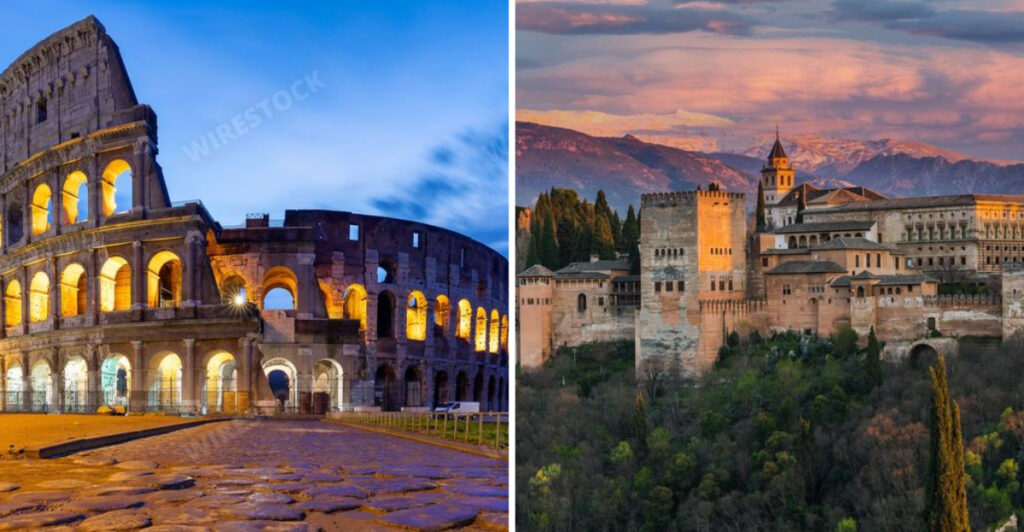Embarking on a journey through time, I uncovered seventeen of the world’s oldest landmarks. These architectural marvels, steeped in history, unveil the stories of civilizations long gone. Each site offers a unique glimpse into the past, showcasing human ingenuity and the rich tapestry of cultural heritage. From the towering pyramids of Egypt to the mysterious megaliths of Stonehenge, these destinations are more than mere structures. They are testament to the creativity, resilience, and ambition of our ancestors. Join me as I recount the awe-inspiring experiences and fascinating discoveries I made at each of these remarkable locations.
The Great Pyramid of Giza
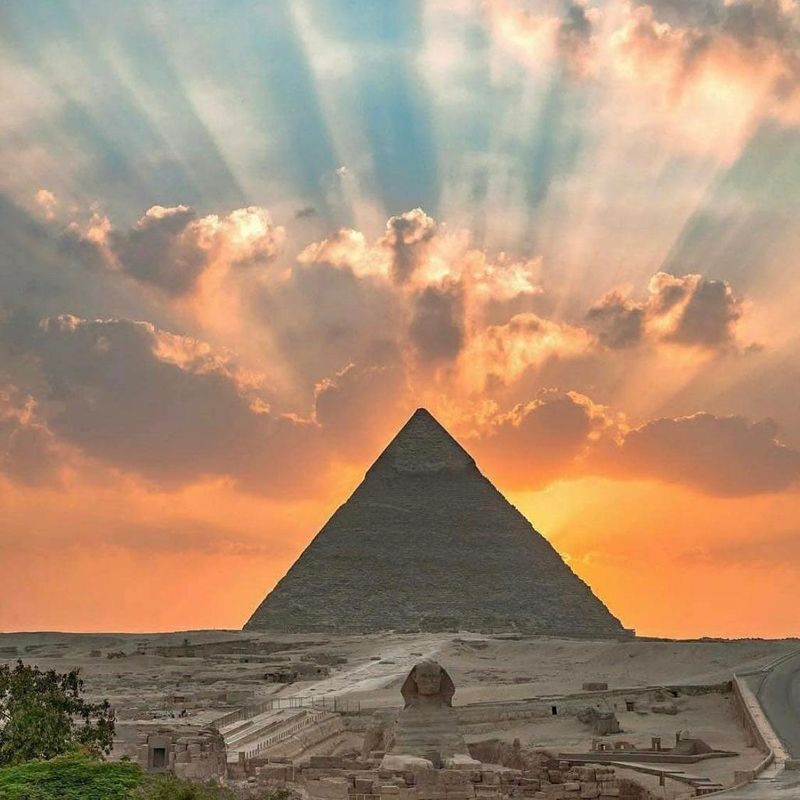
Standing as a testament to ancient engineering, the Great Pyramid of Giza is a monumental masterpiece. Constructed over 4,500 years ago, this iconic edifice once served as a pharaoh’s tomb. Its enigmatic passageways and chambers evoke a sense of mystery and wonder.
The pyramid’s alignment with the cardinal points showcases the Egyptians’ advanced astronomical knowledge. Gazing up at its towering facade, one can’t help but feel humbled by the sheer scale and precision of its construction.
A marvel of human achievement, the Great Pyramid continues to intrigue scholars and travelers alike, earning its place as a world wonder.
Stonehenge
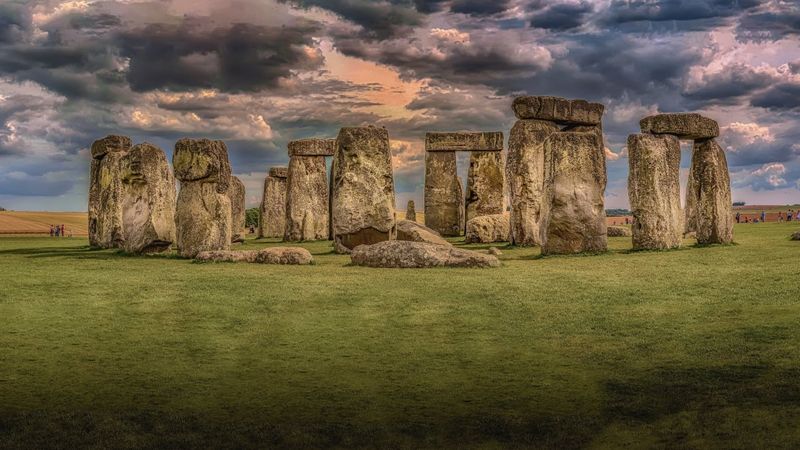
Stonehenge stands as a prehistoric enigma on the Salisbury Plain. For millennia, this circular formation of towering stones has captivated the imagination of historians and tourists alike.
Created over 4,000 years ago, its purpose remains a topic of debate, with theories ranging from astronomical observatory to religious site. The alignment of the stones with the summer solstice is particularly fascinating.
Visiting Stonehenge evokes a sense of connection to ancient rituals and traditions. It’s a site where mystery meets history, inviting all who visit to ponder its secrets and significance. What stories do these stones tell?
The Parthenon
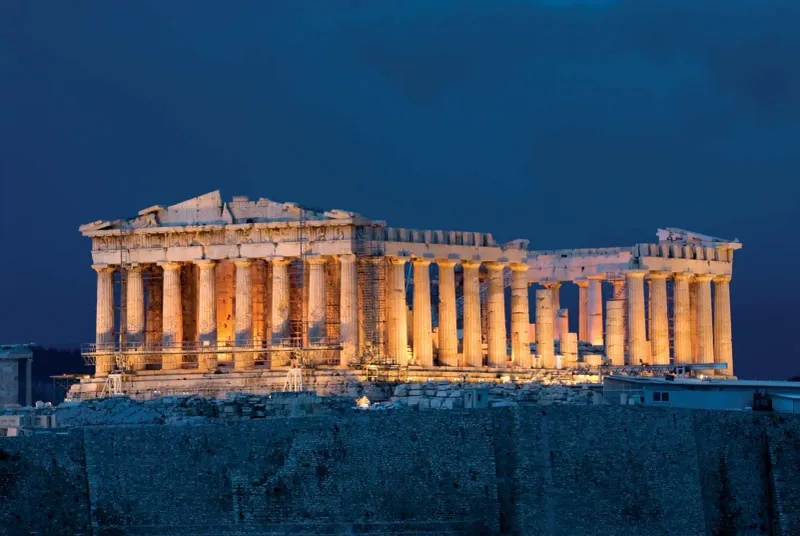
Perched atop the Acropolis, the Parthenon epitomizes ancient Greek architecture. This temple, dedicated to Athena, has stood for over 2,500 years as a symbol of Athens’ glory and cultural prowess.
Its Doric columns and intricate friezes reflect the artistry and devotion of its creators. Although partly in ruins, the Parthenon’s grandeur remains undiminished.
Wandering through its marble ruins, visitors are transported to an era of philosophers and orators. The Parthenon is not just a relic; it’s a reminder of a civilization that valued wisdom, beauty, and democracy. What echoes of the past linger here?
Machu Picchu

Nestled high in the Andes, Machu Picchu is a testament to the ingenuity of the Inca civilization. This ancient city, shrouded in mist, captivates all who venture to its heights.
Constructed in the 15th century, its precise stone masonry and terraced landscape reveal the Inca’s architectural prowess and harmony with nature. The site’s purpose remains partially veiled in mystery, adding to its allure.
Exploring Machu Picchu offers breathtaking views and a profound connection to the past. It’s a journey into a lost world, where history and mystery coexist in perfect harmony. What secrets does it guard?
Petra
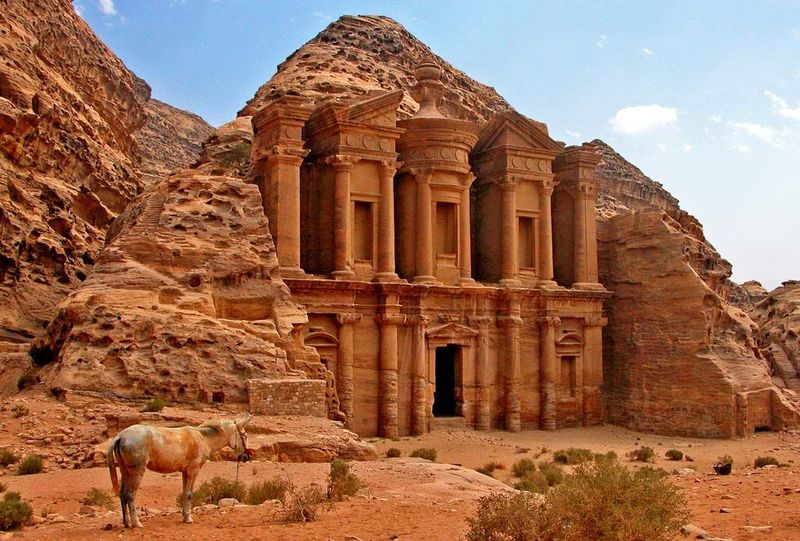
Carved into the rose-red cliffs of Jordan, Petra is a marvel of ancient engineering and artistry. Known as the “Rose City,” its stunning façades were once the thriving capital of the Nabataean kingdom.
This archaeological wonder, hidden for centuries, was rediscovered in the 19th century, captivating explorers and historians ever since. Walking through the Siq, a narrow canyon leading to the Treasury, is an experience like no other.
Petra’s majestic structures, hewn directly from the rock, narrate tales of a civilization skilled in trade and architecture. What ancient secrets do its stone walls conceal?
The Colosseum
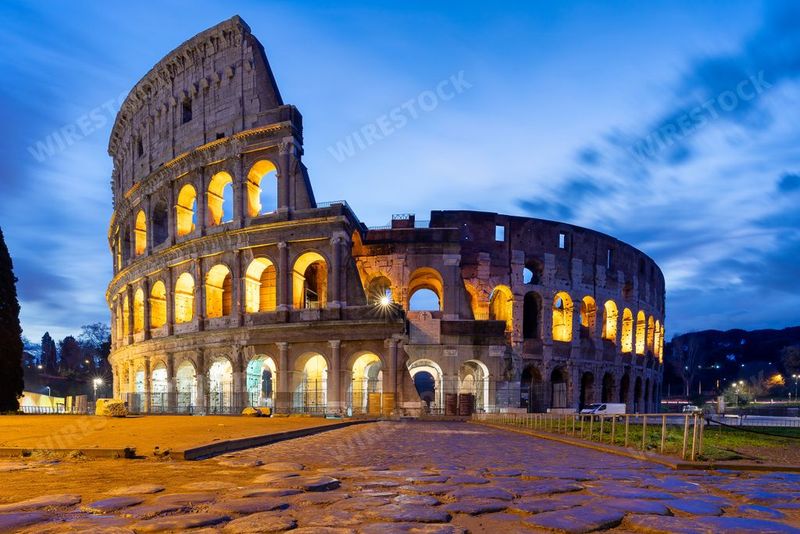
In the heart of Rome, the Colosseum stands as a testament to imperial grandeur. This ancient amphitheater, constructed nearly 2,000 years ago, once hosted gladiatorial contests and public spectacles.
Its iconic arches and vast arena reflect the might of the Roman Empire and its architectural brilliance. Despite the passage of time, the Colosseum remains a symbol of Rome’s enduring legacy.
Walking through its ancient corridors, one can almost hear the roar of the crowds and the clash of swords. The Colosseum is more than a ruin; it’s a window into a world of entertainment and power.
Angkor Wat

Angkor Wat, a sprawling temple complex in Cambodia, is a masterpiece of Khmer architecture. Built in the 12th century, it was originally dedicated to the Hindu god Vishnu before becoming a Buddhist site.
Its intricate bas-reliefs and towering spires are a testament to the ancient empire’s artistic vision and devotion. The temple’s alignment with the equinox is a marvel of architectural precision.
Exploring Angkor Wat is a journey through history, spirituality, and artistry. It’s a place where nature and human creativity converge, creating a serene yet awe-inspiring experience. What stories do its stones whisper?
The Great Wall of China
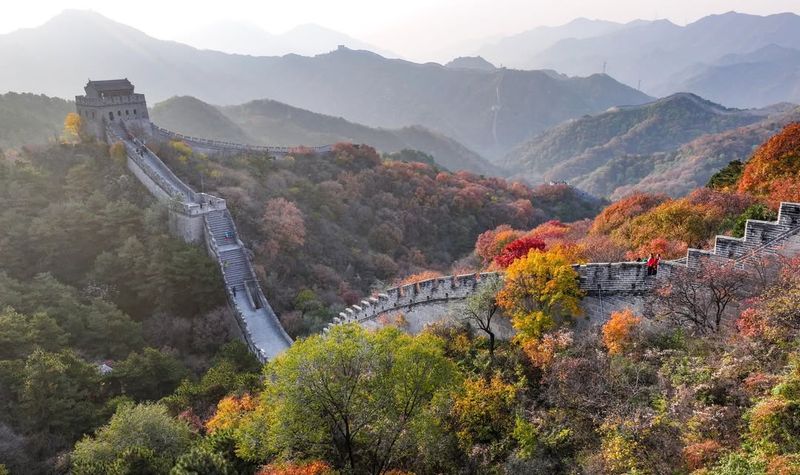
Stretching across northern China, the Great Wall is a monumental feat of ancient defense. Built over several dynasties, it spans thousands of miles, winding through rugged terrain.
Originally constructed to protect against invasions, the wall also served as a symbol of Chinese strength and unity. Its watchtowers and battlements stand as a reminder of the past.
Walking along the Great Wall, one is struck by its sheer scale and the breathtaking vistas it offers. It’s a journey through time and landscape, where history unfolds with each step. What tales echo along its stones?
The Terracotta Army
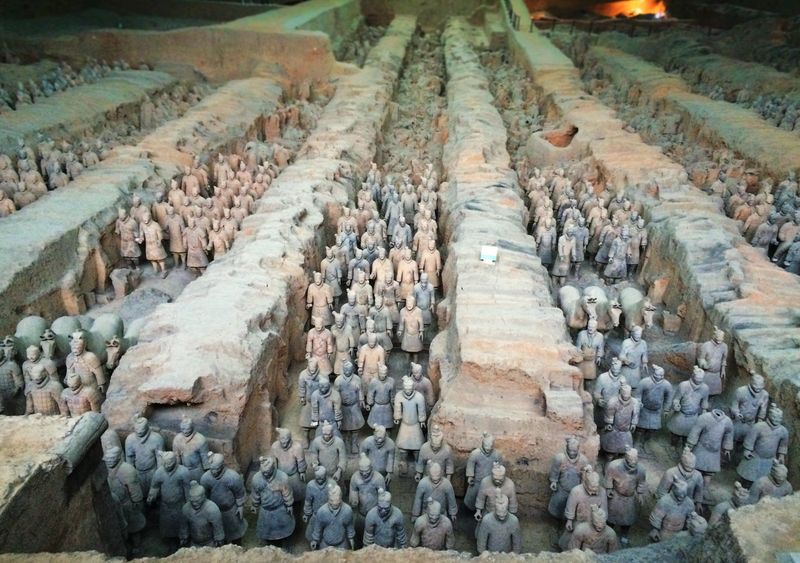
In Xi’an, the Terracotta Army stands guard over the tomb of China’s first emperor, Qin Shi Huang. Discovered in 1974, this life-sized clay army is a marvel of ancient craftsmanship.
Each figure is uniquely detailed, reflecting the skill and artistry of its creators. The army’s purpose was to protect the emperor in the afterlife, a testament to the beliefs of the time.
Visiting this site is a journey into ancient China, where history and art come alive. The Terracotta Army is more than an archaeological find; it’s a window into a world of emperors and warriors.
Moai Statues of Easter Island

On the remote Easter Island, the Moai statues stand as silent sentinels of a bygone era. Carved by the Rapa Nui people, these monolithic figures evoke intrigue and admiration.
The statues, with their enigmatic expressions, reflect the islanders’ artistry and complex society. Each Moai is thought to represent an ancestor, watching over their descendants.
Exploring Easter Island, one is transported to a world of mystery and cultural heritage. The Moai are more than statues; they are guardians of a legacy that continues to fascinate and inspire.
The Alhambra
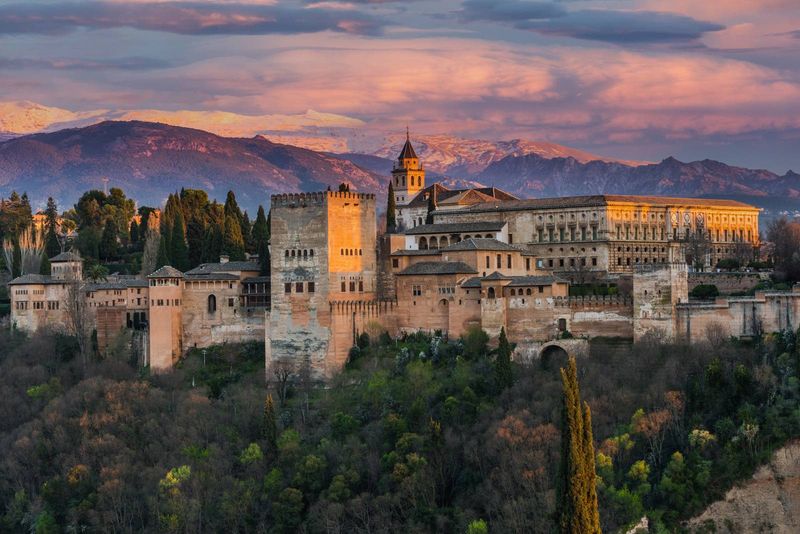
Perched on a hill overlooking Granada, the Alhambra is a jewel of Moorish architecture. This palace-fortress, with its ornate arches and lush gardens, reflects the splendor of the Nasrid dynasty.
Built in the 13th century, the Alhambra is a harmonious blend of art and nature, where intricate mosaics and tranquil courtyards create a serene atmosphere.
Walking through its halls, visitors are enveloped in a world of elegance and history. The Alhambra is not just a monument; it’s a celebration of a rich cultural legacy that still captivates hearts.
Chichen Itza
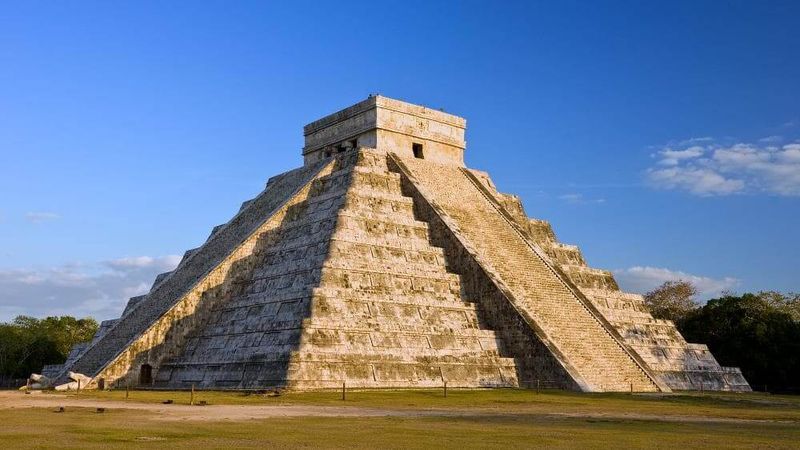
Chichen Itza, in Mexico’s Yucatán Peninsula, is a testament to the Maya civilization’s ingenuity. The Pyramid of Kukulcán, with its serpent-like shadow during the equinox, is a marvel of astronomical precision.
This ancient city, a UNESCO World Heritage site, reveals a rich tapestry of history and culture. Its ball courts and temples showcase the Maya’s architectural and scientific prowess.
Visiting Chichen Itza is an exploration of a civilization known for its advancements in mathematics and astronomy. It’s a place where history is etched in stone, inviting discovery and wonder.
The Hagia Sophia
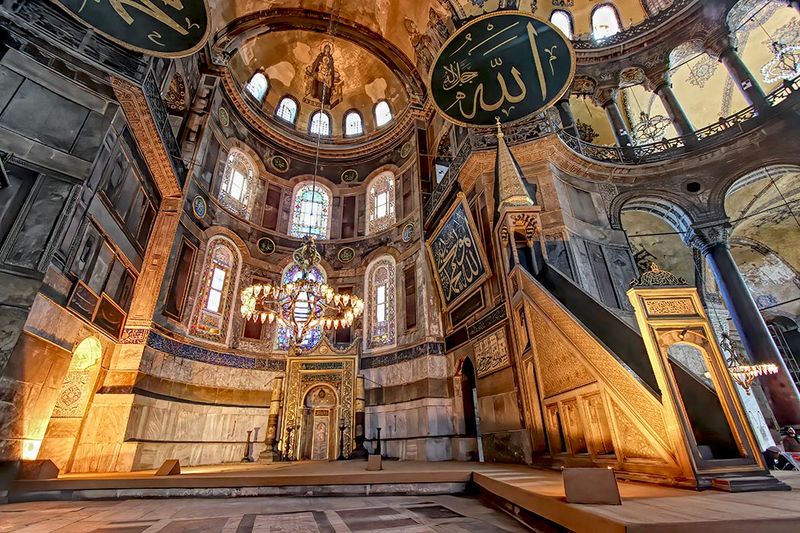
In the heart of Istanbul, the Hagia Sophia stands as a masterpiece of Byzantine architecture. Originally built as a cathedral in the 6th century, it has since been a mosque and now a museum.
Its massive dome and exquisite mosaics reflect the artistic and engineering achievements of its time. The Hagia Sophia is a symbol of cultural and religious transformation.
Walking through its hallowed halls, one is enveloped in a sense of grandeur and history. It’s more than a building; it’s a testament to the city’s storied past and the crossroads of civilizations.
The Acropolis of Athens
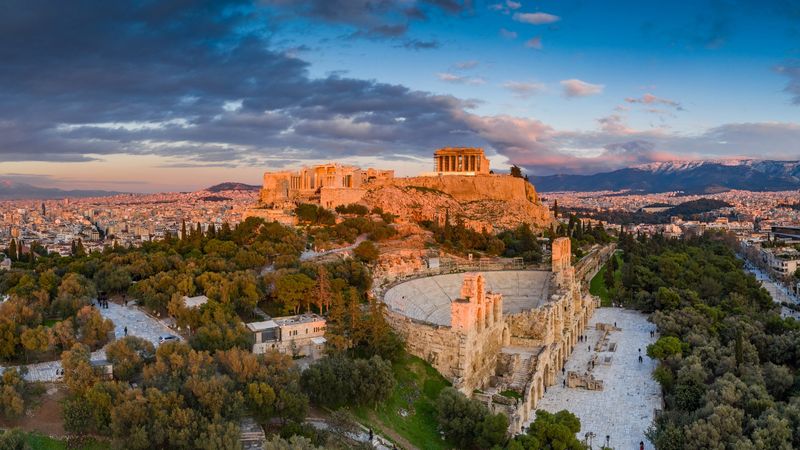
The Acropolis of Athens, a citadel of ancient Greece, overlooks the city as a symbol of classical civilization. Home to the Parthenon and other temples, it embodies the artistic and political achievements of Athens.
This UNESCO World Heritage site stands as a testament to the ideals of democracy and humanism. Its marble structures, though weathered, continue to captivate and inspire.
Walking among the ruins, visitors are transported to an era of philosophers and statesmen. The Acropolis is more than an archaeological site; it’s a beacon of cultural heritage and enlightenment.
The Pyramids of Teotihuacan
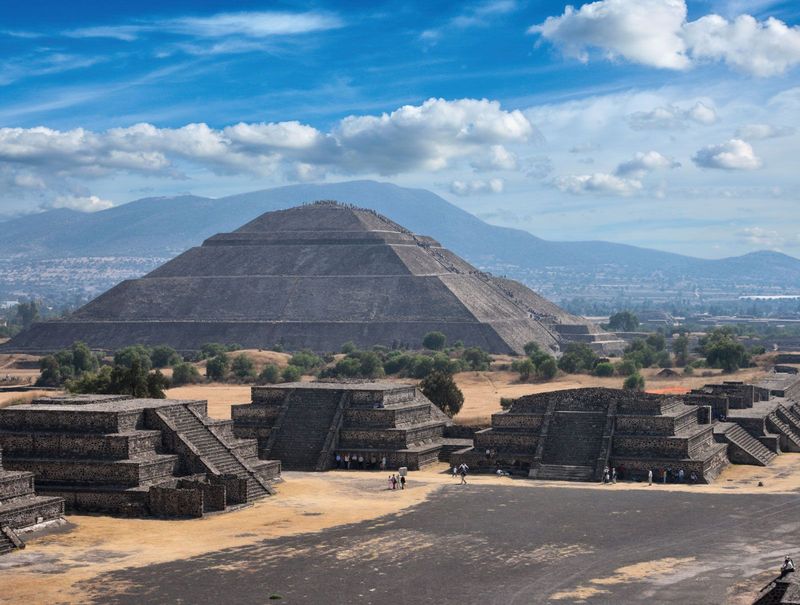
Teotihuacan, near Mexico City, is a testament to ancient Mesoamerican civilization. The Pyramid of the Sun, one of its iconic structures, offers breathtaking views from its summit.
This vast archaeological site reveals a sophisticated urban center, with impressive pyramids and murals that hint at its past grandeur. Its origins and founders remain a mystery.
Exploring Teotihuacan, one is immersed in a world of history and mystery. It’s a place where ancient architecture and culture invite exploration and fascination. What stories lie hidden in its stones?
Borobudur
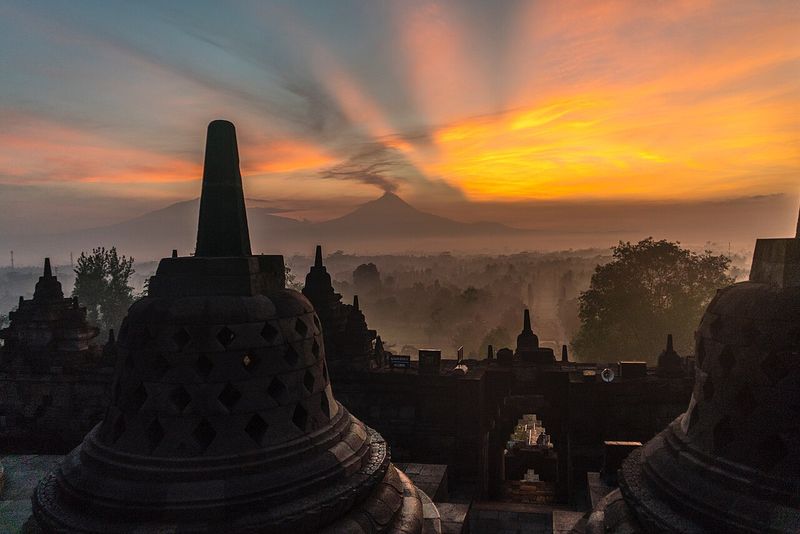
In the heart of Java, Borobudur emerges from the mist as a monument to Buddhist architecture. Built in the 9th century, this massive stupa is adorned with intricate carvings and reliefs.
Its concentric terraces symbolize the path to enlightenment, guiding visitors on a spiritual journey. The temple’s alignment with the cardinal points and nearby volcanoes adds to its mystical allure.
Visiting Borobudur is a journey of reflection and discovery. It’s more than a religious site; it’s a testament to human creativity and spiritual aspiration. What wisdom does it impart to those who visit?
Göbekli Tepe, Turkey
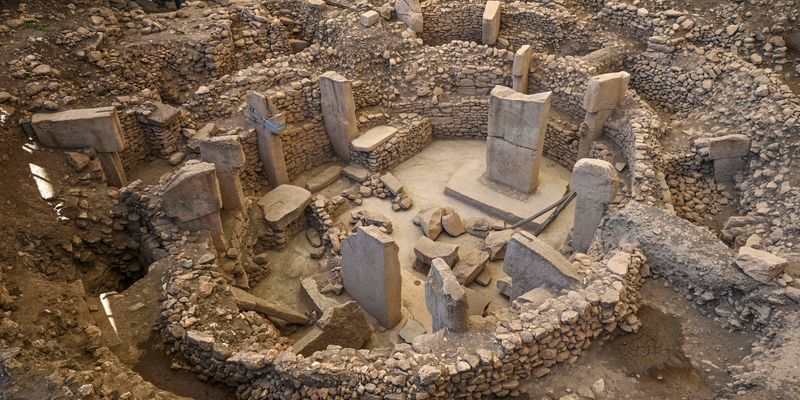
Imagine a place older than Stonehenge, a site that challenges our understanding of early human civilization. Göbekli Tepe, nestled in the hills of southeastern Turkey, is that place. Its massive stone pillars, carved with mysterious symbols, stand as silent sentinels of a forgotten age.
Unearthed in the 1990s, this site dates back over 11,000 years, predating agriculture and pottery. Its purpose remains a mystery, sparking theories of ancient rituals and social gatherings. What stories do these stones whisper of our ancestors’ beliefs and lives?
Göbekli Tepe invites us to ponder the roots of human society.

